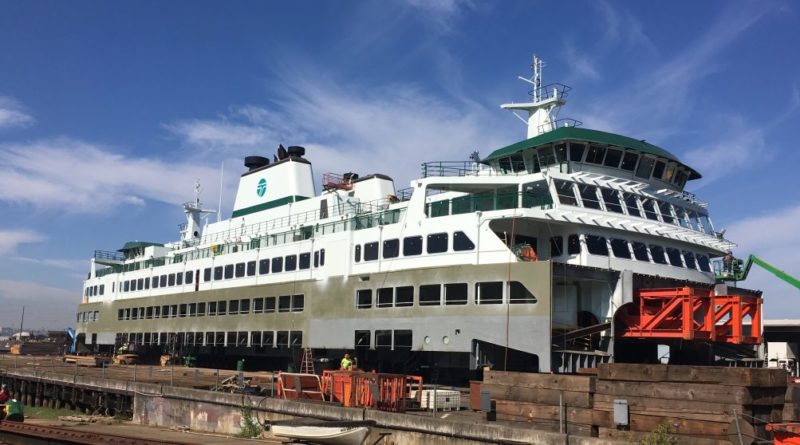The superstructure for Washington State Ferries' fourth Olympic-class vessel was moved by barge Wednesday night up Puget Sound to Seattle, where it will be lifted onto the hull of the Suquamish.
Built at the Jesse Co. fabrication facility near the Port of Tacoma, Wash., the 1,600-short-ton top half of the 362’ Suquamish arrived Thursday morning at Vigor Industrial's Harbor Island shipyard in Seattle. On Friday morning, workers will begin the exacting, four-hour process of mating it to the hull.
“We take great pride in helping build quality ferries for the state of Washington,” Phil Jesse, general manager of Jesse Co., said in a statement. “The work is important, the jobs are great, and our families and future generations are able to ride and watch the ferries travel on Puget Sound for many years to come.”
The 144-car Suquamish is scheduled for delivery in July 2018. It will be the last of the Olympic class, preceded by the Tokitae in 2014, Samish in 2015 and the Chimacum earlier this year.
More than a dozen subcontractors are working with Vigor on the $122 million vessel, and the companies and economic development officials tout larger benefits to the Puget Sound region. Building the ferry generates up to 560 direct jobs at shipyards and subcontractors, and a total of 1,300 direct, indirect and induced jobs, they say.
“Building these ferries is extremely gratifying to our workers and helps strengthen our company and the maritime industry,” Vigor CEO Frank Foti said. “The skills and expertise required are essential to maritime, and the middle-income manufacturing jobs provide great opportunity for industrial artisans and help diversify the economy.”
Ferry officials say their vessels are designed and built for 60 years of service with appropriate maintenance, far exceeding the lifespan of other commercial and military fleets. In comparison the Navy typically retires vessels after 35 years, and BC Ferries at 40 years.
With the largest ferry system in the nation, WSF’s ridership passed 24 million in 2016, the highest total in 13 years, and is expected to continue to grow.




